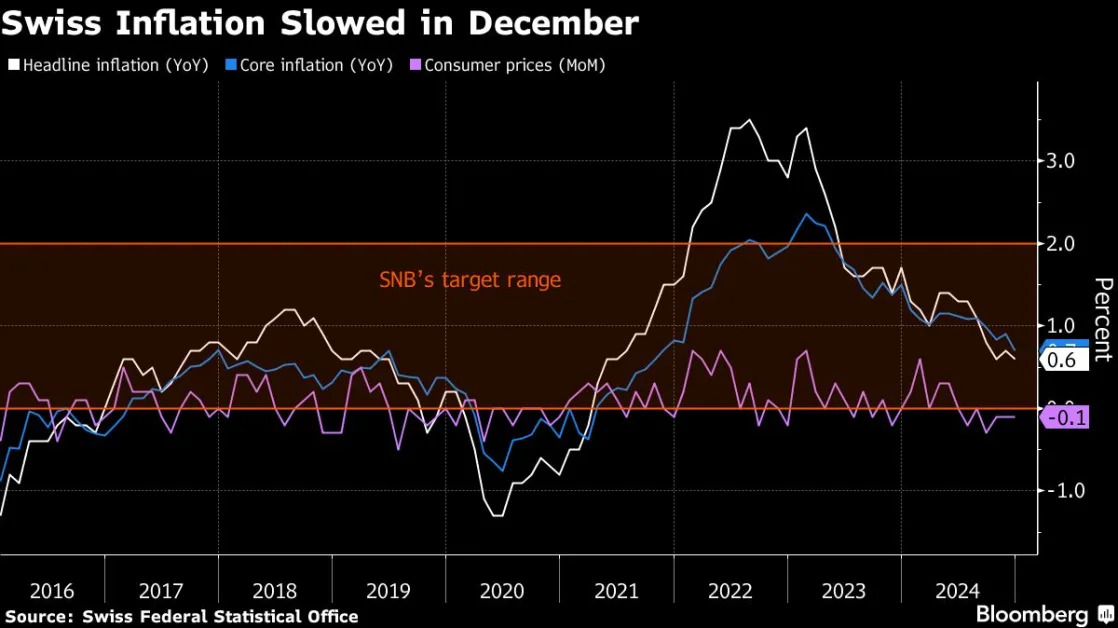(Bloomberg) -- To US Treasury Secretary Scott Bessent, the yield on 10-year government debt is the key gauge for President Donald Trump’s goal of getting lower interest rates.
Three weeks into his second term, though, there’s little expectation they will come sliding down much more anytime soon.
Yields drifted upward again Friday after the monthly jobs report showed that businesses expanded payrolls in January at a solid pace and earnings rose faster than expected. And Americans appear to be preparing for Trump’s tariffs to push up the cost of goods: consumers are projecting that the rate of inflation will jump above 4% over the next year, according to the University of Michigan’s survey, more than twice the Federal Reserve’s target.
The result: Bond traders anticipate that yields will remain elevated — and range bound — until there’s a lot more clarity on where the economy is heading.
“The jobs report suggest a resilient labor market, so there’s no pressure on the Fed to cut,” said Priya Misra, portfolio manager at JPMorgan Asset Management.
The benchmark 10-year Treasury yield — a main baseline for consumer and corporate loans that’s heavily dependent on the long-term outlook — has come down from its early January peak, and was trading at about 4.50% on Monday.
Yet it remains nearly a full percentage point above where it was in mid-September after traders started preparing for tariffs, tax cuts and a rising national debt to put pressure on Treasury prices. With inflation still stubbornly elevated and the economy chugging along, the Fed paused its rate cuts last month and futures traders are pricing in that it will likely remain on hold until September.
To further fuel concerns over price pressures, Trump said he will announce 25% tariffs on all imports of steel and aluminum on Monday. Also, he said he would announce reciprocal tariffs later in the week on countries that tax US imports.
Bessent eased some of the market’s supply worries last week, when the Treasury Department kept quarterly note and bond auctions stable and signaled there would be no changes for at least the next several quarters.
But analysts are still cautious as Trump’s otherwise abrupt break from the policies of former President Joe Biden casts significant uncertainty over the outlook, especially his tariff threats. At the same time, it remains unclear how deeply Trump will seek to cut taxes and what that will do to the scale of the government’s deficit.
“We are not in an environment where you want to make big bets,” said Ed Al-Hussainy, global rates strategist at Columbia Threadneedle.
What Bloomberg strategists say...
“Bessent in an interview on Wednesday said the Trump administration would be focused on keeping the 10-year rate low rather the policy rate...Unfortunately for the Trump administration and for Bessent, the aim of keeping down 10-year Treasury yields might come into conflict with another of the White House’s aims – reducing the trade deficit. That will ultimately likely lead to higher yields.”
—Simon White, Bloomberg Macro Strategist. Read more on MLIV.
This week, the focus will shift to the new auctions of 10- and 30-year Treasuries as a gauge of market demand, as well as Fed Chair Jerome Powell’s testimony before Congress on Tuesday and Wednesday.
The Labor Department will also release the consumer price index reading on Wednesday. The data is likely to reinforce the recent outlook: It’s expected to show that prices rose at a 2.9% pace in January from a year earlier, the same rate as the month before, according to the median estimate of economists surveyed by Bloomberg.
What to Watch
(Updates prices.)





